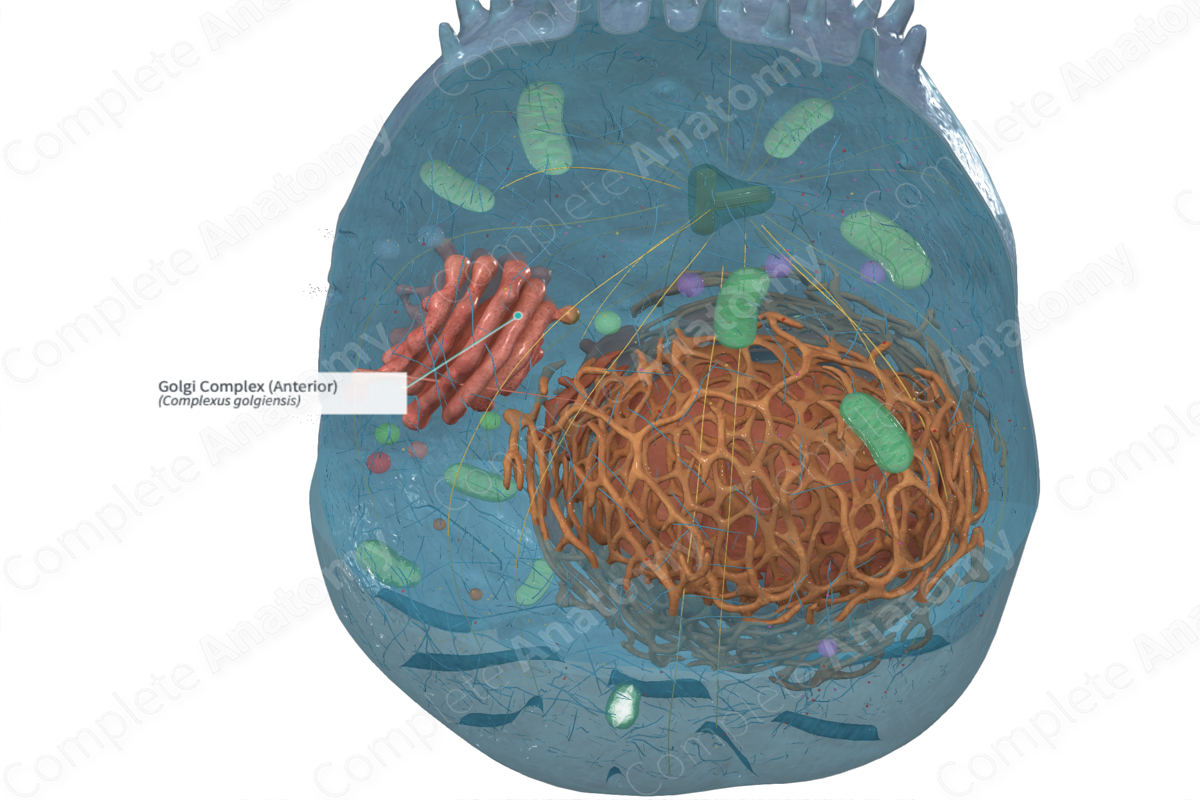
Quick Facts
The Golgi complex is an intracellular compartment of eukaryotes, occupying the perinuclear region and consisting of a number of stacked, flattened sacs with associated tubules and vesicles. Its primary function is to process substances synthesized in the endoplasmic reticulum; in addition it synthesizes some carbohydrates. Transport vesicles from the endoplasmic reticulum fuse with the Golgi complex at the cis face, their cargo is processed while passing through the cisternae, and the processed products are transported from the trans face to the trans-Golgi network for sorting and packaging. The mechanism by which cargo moves through the Golgi complex is not clear; one model proposes transport between cisternae by vesicular budding and fusion, while another proposes dynamic remodeling and recycling so that the cisternae themselves change in composition and move in a cis-to-trans direction (Dorland, 2011).
Structure and/or Key Feature(s)
The Golgi complex or Golgi apparatus is a crescent shaped, parallel stack of membrane-limited tubules or cisternae. It is closely associated with small vesicles involved in vesicular transport. The Golgi complex is very well developed in secretory cells. The Golgi complex exhibits structural polarity and has a “cis face” or an entry face (which is the convex part of the complex) and a “trans face” or an exit face (Ross and Pawlina, 2006; Ovalle, Nahirney and Netter, 2013; McKinley, O'Loughlin and Pennefather-O'Brien, 2016).
Anatomical Relations
The Golgi complex is closely associated with the nucleus and the “cis face” is adjacent to the rough endoplasmic reticulum.
Function
The Golgi complex accepts proteins and various other molecules synthesized by the endoplasmic reticulum. Each cistern of the Golgi complex contains different types of enzymes and so perform different enzymatic reactions.
As some proteins move within the Golgi cisternae, carbohydrates and lipids are added to these proteins to form glycoproteins and glycolipids, respectively. In addition, proteins are added to lipids to form lipoproteins. Some proteins are isolated to be included in new plasmalemma.
As these molecules pass further through the Golgi complex, they are sorted and repackaged into a secretory vesicle. These secretory molecules are either destined to become lysosomes, migrate to the plasmalemma, or exported outside of the cell.
The Golgi apparatus is involved in making carbohydrates (Ross and Pawlina, 2006; Ovalle, Nahirney and Netter, 2013; McKinley, O'Loughlin and Pennefather-O'Brien, 2016).
List of Clinical Correlates
Atrophy of the Golgi complex and subsequent functional errors in specific neurons and loss of these neurons in the brain has been implicated in Alzheimer’s disease (Ovalle, Nahirney and Netter, 2013).
References
Dorland, W. (2011) Dorland's Illustrated Medical Dictionary. 32nd edn. Philadelphia, USA: Elsevier Saunders.
McKinley, M. P., O'Loughlin, V. D. and Pennefather-O'Brien, E. E. (2016) Human Anatomy. 5th edn.: McGraw-Hill Education.
Ovalle, W. K., Nahirney, P. C. and Netter, F. H. (2013) Netter's Essential Histology. ClinicalKey 2012: Elsevier Saunders.
Ross, M. H. and Pawlina, W. (2006) Histology: A text and atlas. Lippincott Williams & Wilkins.
